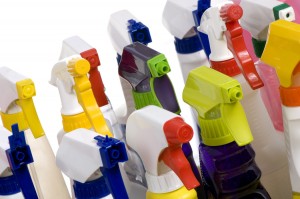Although most people associate type II diabetes with obesity and lack of physical exercise, doctors say don’t really know what causes it. In fact, it’s sometimes described as “number of diseases” involving problems with the hormone insulin. True enough. But recent research shows a link between diabetes and something most of us would never suspect – persistent organic pollutants (POPs), a group of toxic chemicals that are rampant in the environment, and almost impossible to get rid of.
What are POPs. Most of us know them by other names:
 polychlorinated biphenyls (PCBs) – primarily used for coolants and lubricants for various electrical equipment, including transformers, capacitors, vacuum pumps turbines, surface coatings, plasticizers, pesticide extenders and copy paper
polychlorinated biphenyls (PCBs) – primarily used for coolants and lubricants for various electrical equipment, including transformers, capacitors, vacuum pumps turbines, surface coatings, plasticizers, pesticide extenders and copy paper- brominated flame-retardants
- organochlorines – found in some herbicides and pesticides, in chlorine bleach and most chemical disinfectants, many plastics, including PVC (polyvinylchloride), and paper products.
- Dieldrin, DDT, Chlordane and Toxaphene – insecticides, pesticides
- Dioxins and furans – a group of 200+ chemicals formed as unwanted by-products of industrial manufacturing and burning activities. The major sources of dioxins include chemical and pesticide manufacture, burning household trash, forest fires, and burning of industrial and medical waste products.
- Chlordane
- and several industrial chemical products or byproducts.
Many of these chemicals are still legally and widely used, although some have been banned or their use restricted. However, because they are persistent, accumulate in living organisms, and do not biodegrade easily, even those chemicals that are banned or restricted are still causing health problems. They are still found in animals, fish, humans, food, and the environment.
Chlordane, for example, was banned more than 20 years ago in the U.S. but is still found at high levels in our food supply. The chemicals are fat soluble, so once they enter the body they can persist in body fat for a very long time.
Diabetes is just one of the many health problems scientists have linked to these chemicals. Here are a few of the studies specifically about diabetes and pre-diabetic conditions:
- According to an article published in the British medical journal, Lancet, Cambridge University scientists say there is a possible link between POPs and insulin resistance, which can lead to adult onset diabetes. This conclusion was based on a review of earlier studies which, the researchers said, demonstrate a strong relationship between the levels of POPs in blood, particularly organochlorine compounds, and the risk of type 2 diabetes.
- An earlier study also confirmed that background exposure to chemicals such as organochlorine pesticides and PCBs is also associated with insulin resistance among people who do not yet have diabetes.
- As for the effect of being overweight, a study done by Korean scientists found that people were more at risk of diabetes if they were thin with high levels of POPs in their blood than if they were overweight but with low levels of POPs.
There are many different treatments and lifestyle changes recommended for type II diabetes, and for its prevention. However, while there is still more research to be done on the link between POPs and diabetic and pre-diabetic conditions, it might be a good idea to look into the possibility of adding some type of detoxification to your treatment or prevention plan. It may help your condition, and could possibly reduce your risk for other diseases associated with toxic chemicals.
Permission is granted to repost this article in its entirety with credit to Wellness Truth Network and a clickable link back to this page. Wellness Truth Network was founded to protect your right to natural health remedies as well as enlighten readers on FTC and FDA censorship.